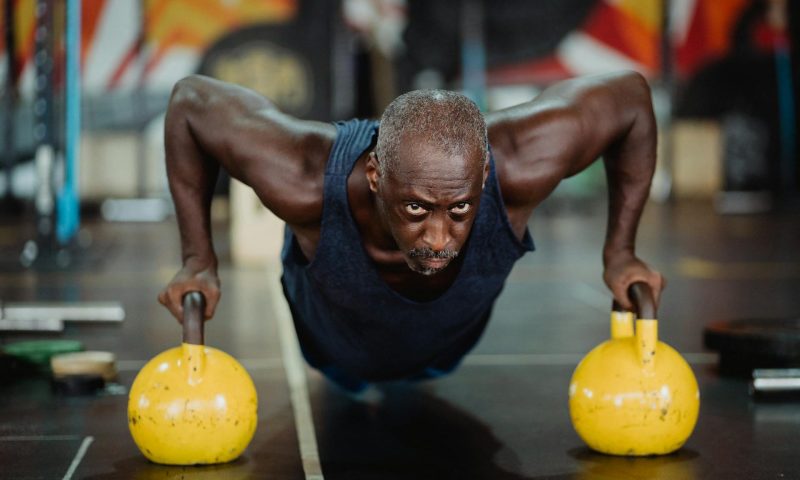Over the years, many older adults experience a decline in muscle mass and strength. Factors like hormonal changes and a decline in hormones like testosterone play a role. Lifestyle factors also matter, including a sedentary lifestyle, inadequate nutrition, and chronic illnesses and inflammatory conditions.
In mounting research, a sedentary lifestyle has been associated with an increased risk of metabolic diseases, cancer, and cardiovascular disease. Getting our bodies moving comes with an array of protective health benefits, regardless of your age. Researchers are often studying the best types of exercise to improve bone density or preserve muscle mass, especially in later life. Let’s take a look at an interesting study on the best training type for preserving muscle mass in older adults.
The research

In a study presented at the 2024 Integrative Physiology of Exercise Conference in Pennsylvania, researchers explored whether incorporating kettlebells into an exercise program would reduce inflammation and enhance muscle strength in older adults, even those who hadn’t exercised recently. The study involved a mix of participants from different backgrounds with no prior experience with resistance training.
Adults between the ages of 60 and 80 began a “Strength After Sixty” exercise program at a nearby gym. For one year, participants finished two kettlebell training sessions every week at a rate of perceived exertion (RPE) of 7 out of 10.
The results

The results revealed the following:
- After six months of kettlebell training, participants showed improvements in grip strength, upper leg strength, and increased muscle mass.
- After 12 months, physical function improved.
- After 12 months, it took individuals less time to climb a flight of stairs and complete five chair stands, which involves getting up out of a chair and standing up.
- Researchers also examined blood markers and found that whole-body inflammation had decreased.
The takeaway

What we can take away from this study is that it’s not too late to start a resistance training routine in your later years, and you’ll still get the benefits. This research demonstrated that kettlebell training for older adults can effectively strengthen muscles, increase muscle mass, reduce inflammation, and enhance grip strength, upper leg strength, and overall physical function.
You don’t have to be a lifelong exercise or weight training enthusiast to pick up that kettlebell and get to work. For this study, the participants performed exercises like bent-over rows, squats, deadlifts, shoulder presses, and my personal favorite, the kettlebell swing.




